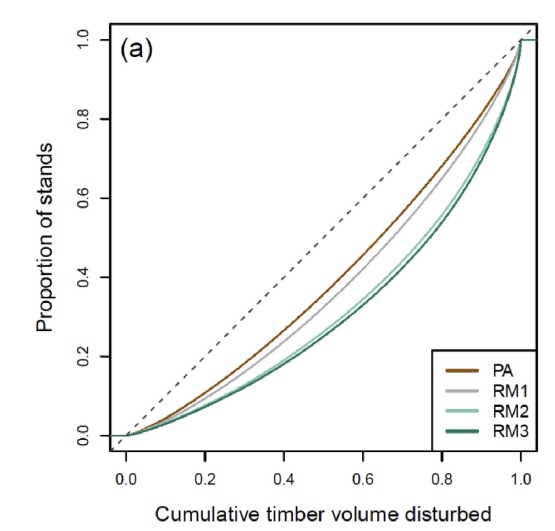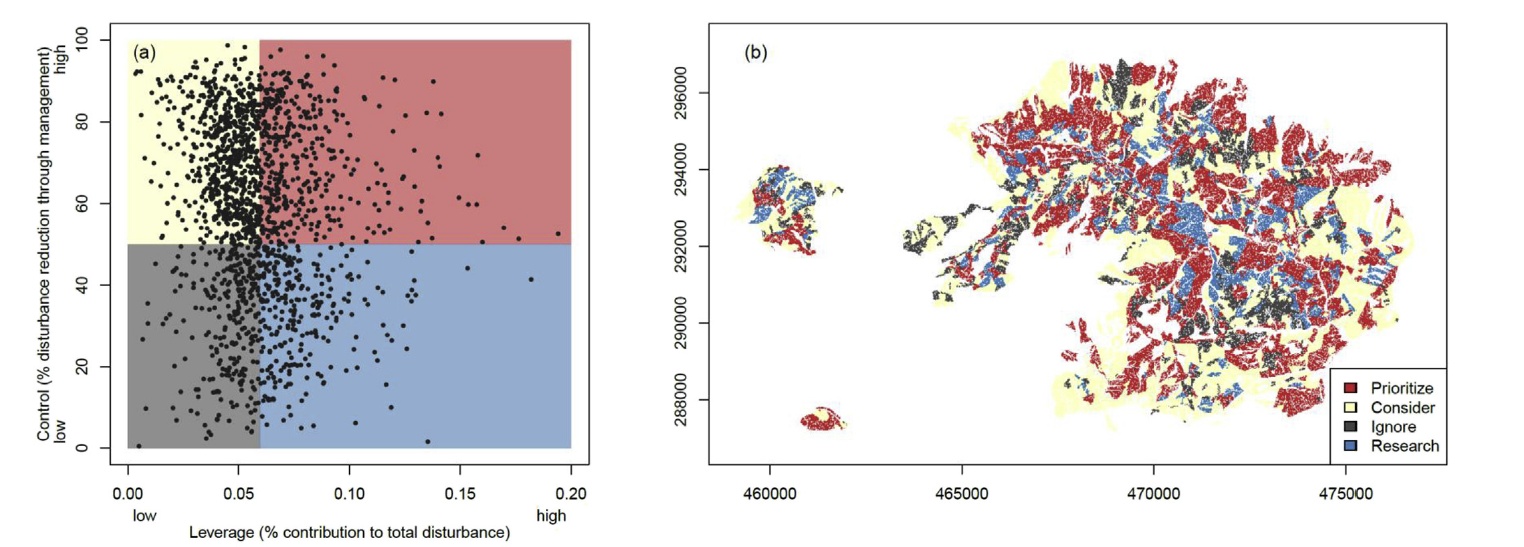Improving landscape-scale disturbance management
Harnessing landscape heterogeneity can help address changing disturbance regimes in management, finds a recent study published in the Journal of Environmental Management.
Changing forest disturbance regimes are increasingly challenging the sustainable provisioning of ecosystem services. Consequently, they are one of the biggest challenges faced by forest managers today. Important questions in addressing risks in management are which stands to prioritize, and thus where to best allocate the scarce resources available for risk management.
In a recent landscape-scale simulation study published in the Journal of Environmental Management, we showed that the contribution of individual stands to overall risk from wind and bark beetle disturbances is highly uneven. Specifically, 50% of the disturbed timber volume accrued in only 25% of the stands when risk management measures were applied. A further insight was that our best available risk management approaches vary with regard to how effective they are within the landscape. While for some stands, risk management reduced the disturbed timber volume by >50% over 200 years, in others the realized risk reduction was minimal.

This variability can be harnessed for improved management of forest disturbances: We suggest that risk management should focus on areas that have high leverage (i.e., stands that make a disproportionally high contribution to landscape-scale risk), and where we have considerable control over risk factors (i.e., where best practice risk management results in a considerable reduction of disturbance impacts). In our test landscape in the Front Range of the Austrian Alps 24% of the stands were in this category, and could be the focus of intensified risk management aiming to mitigate disturbance impacts.

In contrast, stands that are not strongly exposed to disturbances and where risk management measures do not substantially alter the timber volume disturbed (17% in our analysis) could be ignored in risk management. These are areas in which management could aim to embrace natural disturbances for their beneficial effects on biodiversity, rather than trying to control them. Overall, our analysis shows how spatial analyses can improve disturbance management in a changing world. For more details see the paper, published in the Journal of Environmental Management.